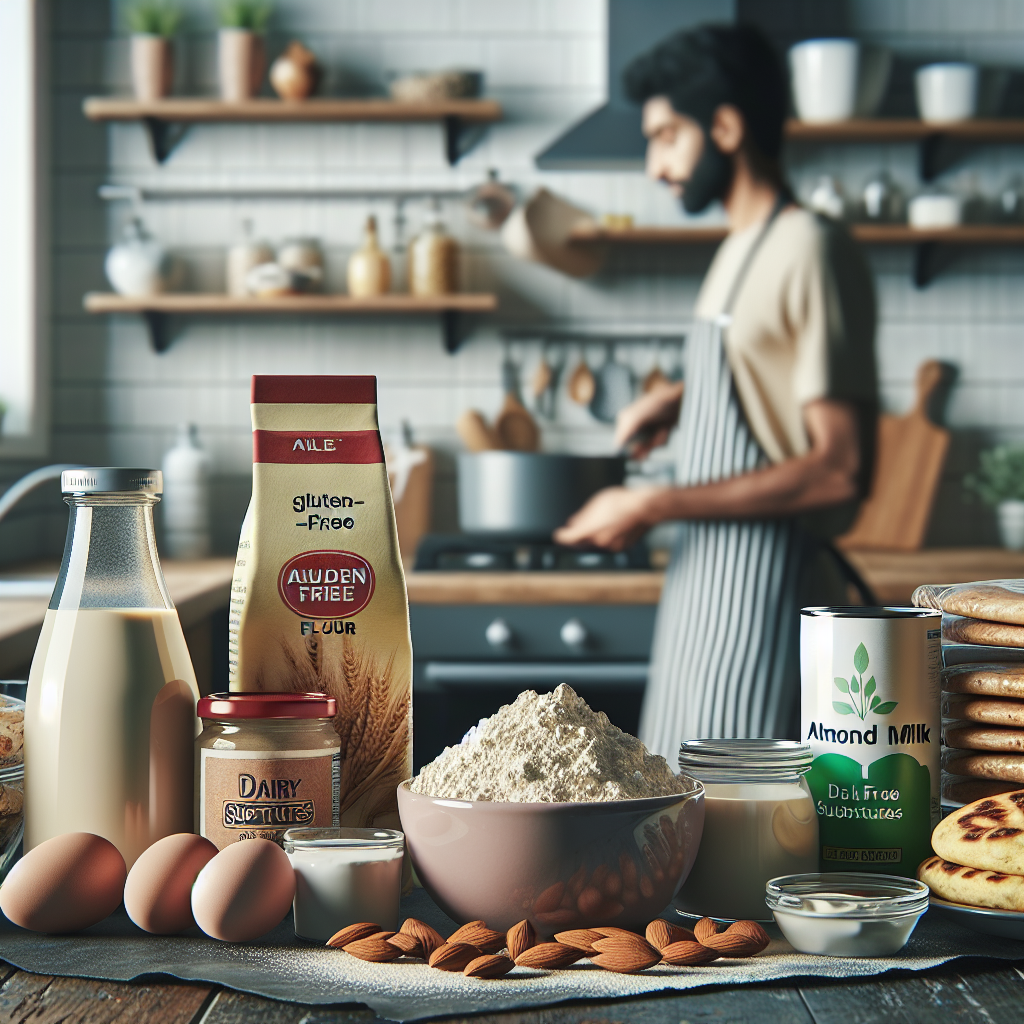In today’s diverse culinary landscape, food allergies are increasingly common. Cooking for someone with allergies doesn’t mean sacrificing flavor or creativity; instead, it opens the door to exploring new ingredients and flavors. With some essential ingredient swaps, you can create dishes that are not only safe but delightful. Here’s a guide to help you navigate allergy-friendly cooking by providing safe alternatives for common allergens.
Understanding Common Food Allergens
The most common food allergens include:
- Peanuts
- Tree Nuts
- Dairy
- Eggs
- Wheat
- Soy
- Fish
- Shellfish
Each of these can pose serious health risks, so it’s essential to find suitable alternatives when cooking for someone with these allergies.
Ingredient Swaps for Common Allergens
1. Dairy Alternatives
Swap: Milk → Plant-based Milks (Almond, Coconut, Oat, Soy, Rice)
- Use: Unsweetened almond milk for a mild flavor, coconut milk for creaminess in desserts, or soy milk for baking.
Swap: Butter → Coconut Oil, Ghee, or Dairy-Free Margarine
- Use: Coconut oil imparts a subtle flavor, while ghee (if lactose is not a concern) can replace butter effectively in savory dishes.
2. Egg Substitutes
Swap: Eggs → Flaxseed Meal or Chia Seeds
- Use: Mix 1 tablespoon of flaxseed meal or chia seeds with 2.5 tablespoons of water, let it sit until it thickens (about 5-10 minutes), and use it as a binder in baking.
Swap: Eggs → Applesauce or Mashed Bananas
- Use: This is excellent for sweet recipes, where you can replace one egg with 1/4 cup of unsweetened applesauce or mashed banana.
3. Wheat Alternatives
Swap: All-Purpose Flour → Gluten-Free Flour Blends
- Use: Look for a blend designed for baking, such as a mixture of rice flour, almond flour, and tapioca starch.
- Tip: Add xanthan gum to mimic the texture commonly found in wheat flour.
Swap: Bread → Gluten-Free Breads or Wraps
- Use: There are numerous gluten-free bread brands available made with various grains that can be used for sandwiches or as toast.
4. Nut Alternatives
Swap: Peanut Butter → Sunflower Seed Butter or Soy Nut Butter
- Use: Sunflower seed butter is a creamy, nut-free alternative that works well in spreads and baking.
Swap: Almond Flour → Oat Flour or Coconut Flour
- Use: Both oat and coconut flour can be great substitutes in baking, though they absorb moisture differently; be cautious with quantities.
5. Soy Alternatives
Swap: Soy Sauce → Coconut Aminos or Tamari
- Use: Coconut aminos provide a similar savory flavor without the soy, making it a great option for stir-fries and marinades.
Swap: Tofu → Cauliflower or Chickpeas
- Use: Cauliflower can be blended into creamy sauces or used as a meat substitute in stir-fries, while chickpeas add protein and texture.
6. Fish and Shellfish Alternatives
Swap: Fish Sauce → Soy Sauce or Mushroom Soy Sauce
- Use: While not identical in flavor, these alternatives can add umami to your dishes without the allergy risk.
Swap: Seafood → Plant-based Proteins
- Use: Heart of palm or jackfruit can mimic texture in dishes that traditionally utilize seafood.
Cooking Tips for Allergy-Friendly Meals
-
Cleanliness is Key: Prevent cross-contamination by thoroughly cleaning surfaces, tools, and utensils. Use separate cutting boards and cooking tools when preparing meals for individuals with allergies.
-
Read Labels: Always read ingredient labels carefully. Many processed foods can contain hidden allergens.
-
Experiment Boldly: Don’t hesitate to explore new cuisines that naturally avoid allergens. For example, Mediterranean, Indian, and many Asian dishes offer naturally allergen-friendly options.
-
Focus on Whole Foods: Fresh fruits, vegetables, grains, and proteins are often free from common allergens and can be the basis of delicious meals.
- Involve Everyone: If you’re cooking for someone with allergies, involve them in the process. Cooking together can be a fun way to ensure safety while educating everyone about the ingredients used.
Conclusion
Cooking allergy-friendly meals is an opportunity to get creative and think outside the box. With a few mindful ingredient swaps, you can create delicious recipes that cater to diverse dietary needs. By focusing on whole foods and exploring new flavors, you can ensure that everyone at your table can enjoy safe, satisfying meals. Remember, the key is to remain informed, flexible, and adventurous in the kitchen. Happy cooking!

